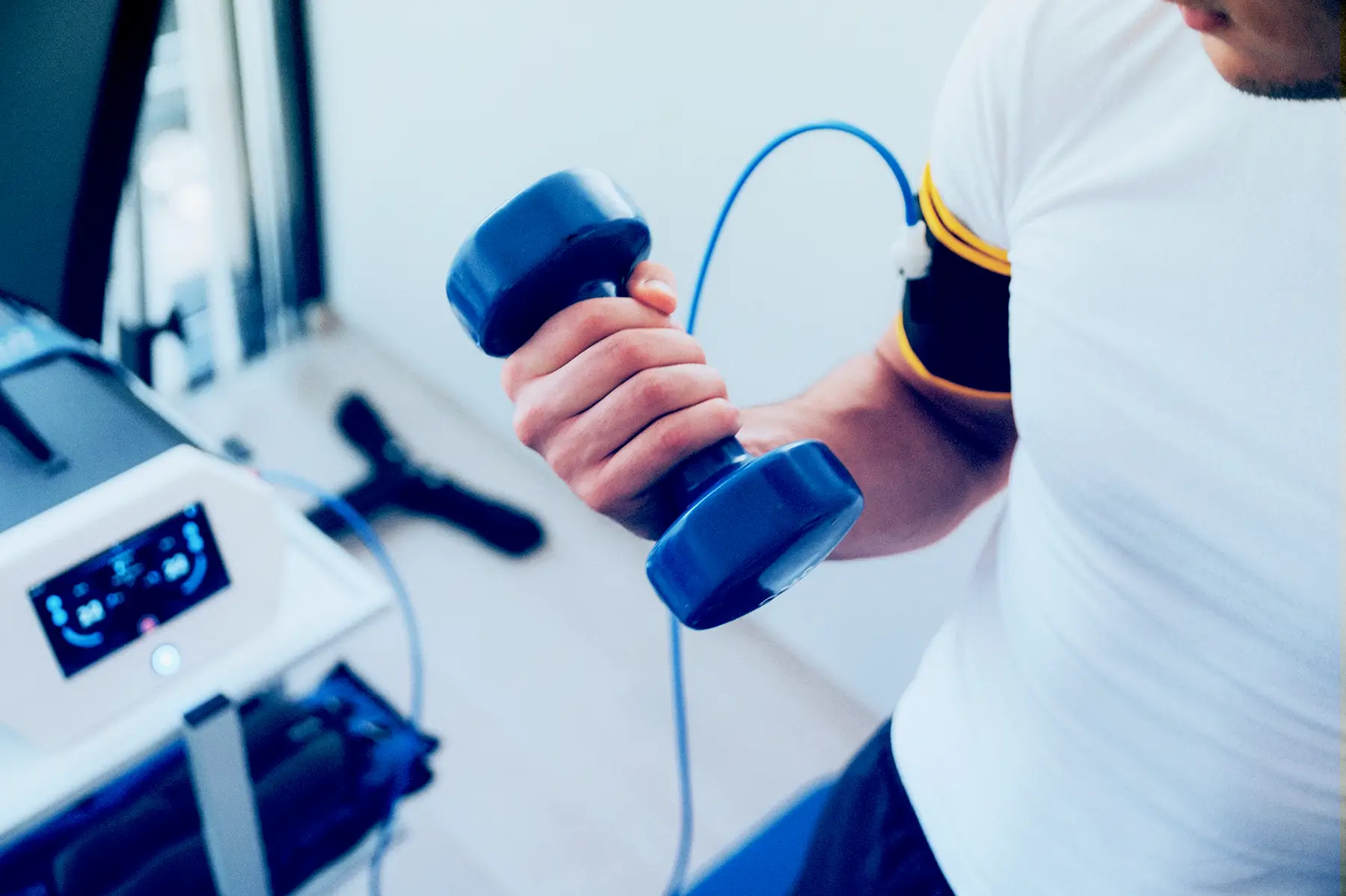This study compared exercises favoring longer versus shorter biceps muscle lengths using low-load blood flow restriction. Both methods increased muscle size similarly, regardless of whether training was done in an extended (long) or flexed (short) shoulder position. Does this mean long muscle lengths don’t lead to greater gains? Read on to uncover the nuance in these findings.
Overview
- What did they test? The researchers had 21 resistance-trained males perform single-arm, low-load blood flow restriction (BFR) training for the biceps: one arm used a preacher curl (shorter muscle length), and the other used an incline curl (longer muscle length). Elbow flexor cross-sectional area was measured using MRI before and after the training period, which included four sessions per week over three weeks.
- What did they find? They found that both groups increased the cross-sectional area of the biceps, with similar changes occurring regardless of whether the training favored a shorter or longer muscle length.
- What does it mean for you? Given there was no advantage to performing the low-load BFR training with exercises favoring longer or shorter muscle lengths, you can choose exercises for the biceps based on what you prefer or the equipment you have available. That said, since the training period was only three weeks, it's unclear whether a longer duration might produce different outcomes.
What’s the problem?
Before we dive into the article, it’s important to set the scene with some background on blood flow restriction (BFR) training. BFR training is a method shown to promote hypertrophy even at low loads. It involves placing a cuff or tourniquet on the proximal (closer to the torso) end of a limb, applying pressure that allows arterial blood flow while minimizing venous return.
BFR has demonstrated the ability to produce muscular hypertrophy at light loads using rep ranges that would typically be insufficient for this purpose 1. As such, it is considered a potentially valuable tool for older adults, individuals undergoing rehabilitation, and others who may not be able to perform heavier resistance training. Additionally, its application in athletic populations as another option for hypertrophy training is also relevant 2.
It has been suggested that the acute swelling caused by restricting blood flow out of the limb triggers the mTORC1 signaling pathway (a key pathway involved in muscle protein synthesis and growth), leading to hypertrophy similar to that achieved through more traditional hypertrophy training with heavier loads 1. Other hypotheses have also been proposed, including those related to metabolic stress, the accumulation of metabolites, increased muscle fiber recruitment, or other hormonal increases or signaling mechanisms 2. In terms of outcomes, hypertrophy gains from the method are comparable to those from traditional training, while strength gains also occur, though they are not as pronounced as those achieved with higher-load training.
The purpose of using this method in the current study wasn’t to test the effectiveness of BFR itself, but rather to minimize swelling associated with muscle damage (which occurs to a lesser extent with BFR training). By doing so, they aimed to ensure that any hypertrophic changes observed were due to tissue changes rather than temporary muscular swelling.
Purpose
The purpose of this study was to investigate whether exercises performed through a full range of motion with a more lengthened, backward arm position (shoulder extended) or a more shortened, forward arm position (shoulder flexed) would lead to greater hypertrophy of the biceps.
There are acute mechanistic arguments in favor of exercises performed at longer muscle lengths, primarily because of the greater tension placed on the muscle when it is lengthened. However, evidence from training studies hasn’t been conclusive.








